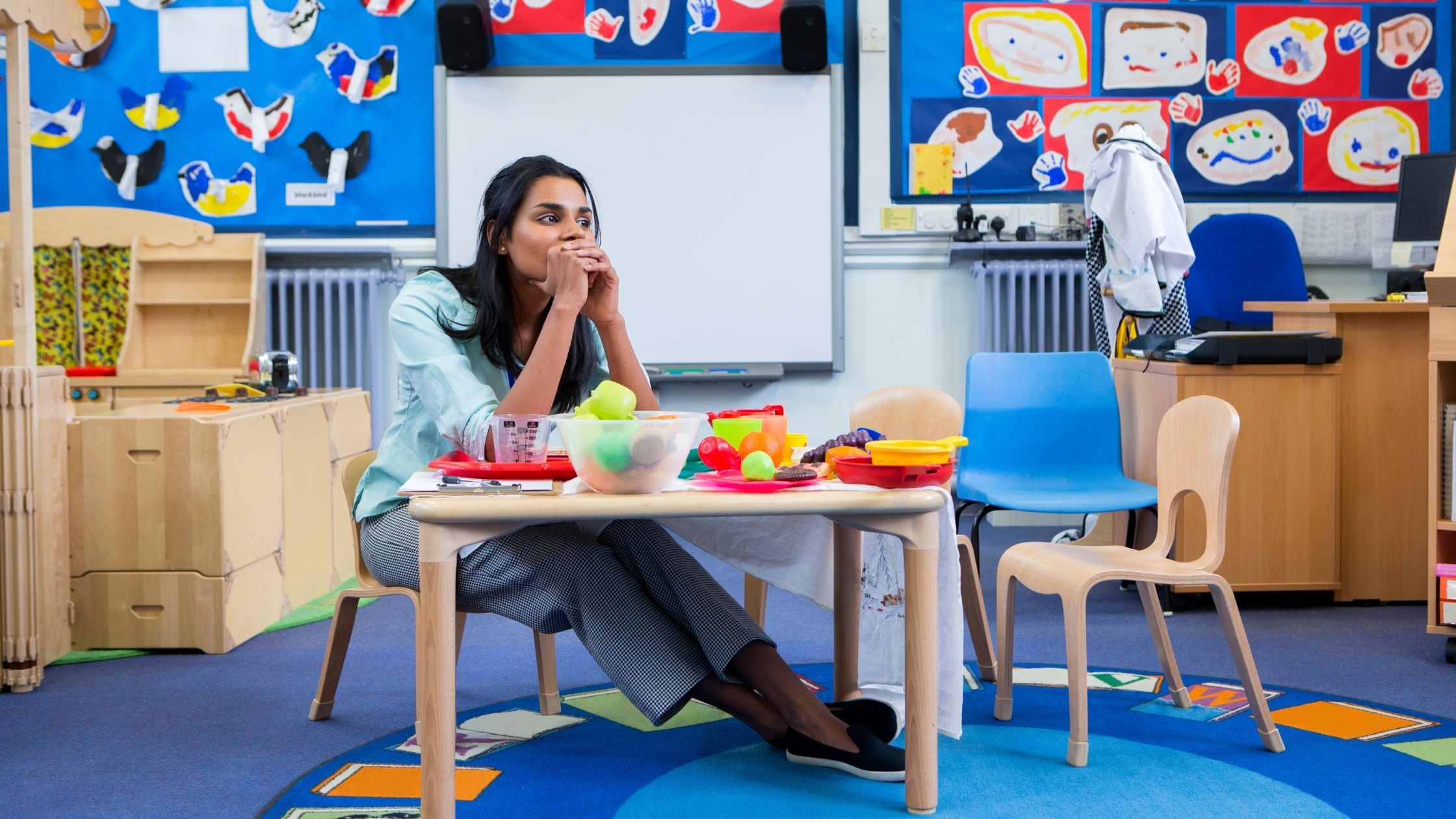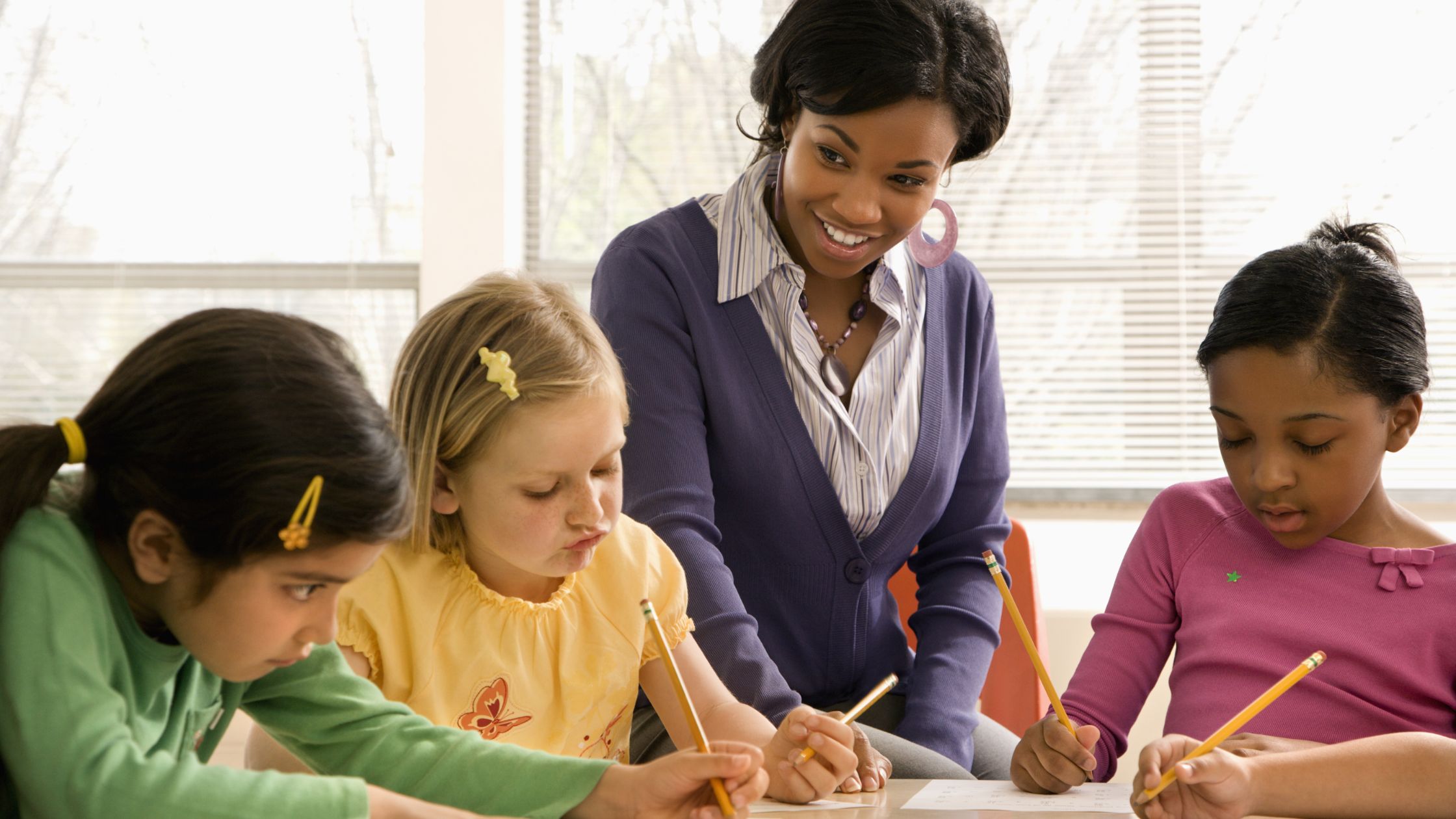Teaching has always been stressful, but never has that been truer than during the pandemic and its aftermath, for a multitude of reasons. Begin with the health concerns educators have felt, for themselves, their loved ones and their students. Then consider the challenges of remote and hybrid learning. And finally, there has been the charged atmosphere to which many teachers returned when schools reopened – one in which there were not only debates about things like vaccines and masks, but also about critical race theory (which in actuality isn’t taught below the collegiate level), LGBTQ issues, etc.
In short, it is a whole new world, and one fraught with challenges for educators. The hours, which were already long, have grown longer. Resources, which were already stretched to the limit, have reached the breaking point. Work-life balance has become a rumor, and the behavioral challenges presented by students are considerable, given the fact that they too have often been adjusting to a return to the classroom.
One survey, conducted by the EdWeek Research Center in July 2021, showed that 60 percent of educators felt encumbered by job-related stress, frequently or constantly. Another study, by the research firm RAND in June 2021, put that number above 75 percent, and contrasted that with the work-related stress felt by adults in all fields, which stood at 40 percent. Moreover, 27 percent of teachers reported signs of depression, compared to 10 percent for the general population.
Small wonder that a Northern Indian School counselor named Tim Francis was quoted by the website Edsurge.com as saying that each and every teacher “was just pushed to the limit” during the pandemic.
If not beyond. The site Cambridgeday.com noted the chilling words of one Baltimore County Public Schools teacher, who told researchers the following: “I was suicidal. … The pandemic just broke me.”
Somewhere between a quarter and a half of all teachers have thought about quitting, according to various studies, and indeed there has been an exodus from the profession. Research by the Economic Policy Institute showed a 4.7 percent reduction in the workforce between the fall of 2019 and the fall of 2021, meaning there were 567,000 fewer teachers on hand than there had been before the pandemic. Alaska, Vermont and New Mexico were particularly hard-hit, as they saw respective declines of 17.5 percent, 11.6 percent and 10.7 percent.
Richard Ingersoll, a professor of education and sociology at the University of Pennsylvania and a leading expert on the U.S. teaching workforce, told ABC News that he expects there to be “severe shortages, particularly in the tougher schools,” and added: “My guess is this is going to turn into a crisis. We’re going to have large numbers of schools which are not adequately staffing significant numbers of their classrooms.”
Ingersoll further pointed out that too often in situations like this “Band-Aids” are applied to gaping wounds, when major surgery is required. And indeed there was some evidence of that, as various schools or districts pointed to increased self-care (like meditation, yoga, etc.) as the solutions that would enable teachers to find their way through these difficult times. But as Chelsea Prax, programs director of children’s health and well-being at the American Federation of Teachers, told Education Week:
“You can’t deep-breathe your way out of a pandemic; you cannot stretch your way out of terrible class sizes; you cannot ‘individual behavior’ your way out of structural problems. Those are effective coping measures, but they don’t change the problem.”
Rather, significant structural change is in order. That same Education Weeks piece suggested steps like smaller classes, fewer meetings and more planning time. Employee assistance programs – especially those that provide mental health services – would also be a significant step, particularly if they were on-site and provided during school hours, as noted in the Cambridgeday piece.
As University of Virginia education professor Patricia Jennings told Education Week, it would also be significant if teachers were given a greater say in those initiatives that are enacted at any given school. “If we’re going to give them more responsibility,” she told that outlet, “give them a lot more freedom and choice.”
Finally, teachers need to continue to look out for each other, as is the case with Happy Teacher Revolution, a support group that began before the pandemic at a school in Baltimore and has since expanded to hundreds of other schools, in the U.S. and elsewhere. The goal of the group is to provide coping strategies, methods that will see educators through.
These are challenging times, without question. The key to meeting these challenges is for administrators and educators to be agile and open-minded – to look at what’s before them with fresh eyes and understand that tweaks are in order. That is what will ultimately pull them through. That is what will allow them to persist and grow.




